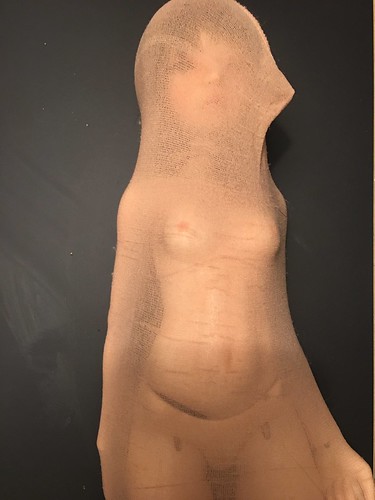As well as the musk mixture stimulating the least.crease within the percentage
Plus the musk mixture stimulating the least.crease in the percentage of responsive OSNs suggested that a big proportion from the KCl OSNs analyzed by these solutions had been capable of responding if PRIMA-1 site tested with an proper odorant, even though the precise proportion can not be ascertained. Due to the fact each OR gene is expressed in roughly 000 OSNs, it is actually likely that these research queried a large proportion of PubMed ID:https://www.ncbi.nlm.nih.gov/pubmed/11836068 the OR repertoire. The repertoire is biased These studies revealed a number of striking functions with the mouse OSN repertoire. First, the repertoire is biased. Even though each odorant mixture stimulated a subset of OSNs, some mixtures activated far more OSNs than other folks (Figs. two, 3). Remarkably, 59 in the 27 OSNs activated by mixtures responded for the aldehyde mixture, whereas, in contrast, only 5 of OSNs responded towards the amine mixture. Taking into account the amount of odorants per mixture, the aldehyde mixture activated an average of 9.9 OSNsodorant, whereas, at the other intense, the musk mixture activated only onefifth as lots of (two.0 OSNsodorant) and the azine and amine mixtures only stimulated two.three and 2.5 OSNsodorant, respectively (Fig. three). Alcohols and terpenes  activated intermediate numbers of OSNs (six.2 and five. OSNsodorant, respectively). Bias at the amount of single odorants was also evident but was most striking among the eight OSNs tested with single aldehydes (Fig. 4). Echoing a report that octanal stimulates a high percentage of rat OSNs (Araneda et al 2004), 33 of the eight OSNs (40.7 ) responded to octanal (63) and 30 (37 ) responded to decanal (64), whereas other aldehydes stimulated 2 OSNs each. BiasThe repertoire exhibits intense diversity One of the most striking functions of the OSN responses seen in these experiments was their intense diversity. This diversity was apparent, 1st, in the responses of OSNs towards the three odorant mixtures. The 27 mixtureresponsive OSNs showed 93 various response profiles composed of responses to single mixtures or combinations of mixtures (Fig. two). OSN responses to individual odorants have been also extremely diverse. For instance, 8 OSNs tested with single aldehydes showed 36 distinctive response profiles composed of responses to single aldehydes or combinations of distinctive aldehydes (Fig. 4). Similarly, 34 OSNs tested with single alcohols showed 5 response profiles and six OSNs tested with various musk odorants showed five diverse profiles (Fig. four). The diversity of OSN responses observed in these experiments is consistent with the massive size on the mouse OR repertoire along with the extensive diversity observed in OR protein sequences (Zhang and Firestein, 2002; Godfrey et al 2004). Nonetheless, as currently noted, OSNs using the identical OR can show slightly unique response profiles, possibly as a result of variations inside the degree of OR gene expression among neurons. Therefore, whilst significantly of the response diversity observed in these experiments is likely to reflect diversity within the recognition properties of different ORs, some is probably to be because of variations in the response properties of OSNs expressing the same OR. Most mouse OSNs are narrowly tuned The massive number of OSNs and odorants tested in these research permitted analysis in the extent to which individual OSNs are narrowly tuned to recognize a comparatively tiny number of associated odorants versus broadly tuned to recognize a comparatively substantial number and number of odorants.984 J. Neurosci June 22, 20 3(25):979 Nara et al. Odor Coding inside the Mouse NoseThese experiments indicate that the majority of m.
activated intermediate numbers of OSNs (six.2 and five. OSNsodorant, respectively). Bias at the amount of single odorants was also evident but was most striking among the eight OSNs tested with single aldehydes (Fig. 4). Echoing a report that octanal stimulates a high percentage of rat OSNs (Araneda et al 2004), 33 of the eight OSNs (40.7 ) responded to octanal (63) and 30 (37 ) responded to decanal (64), whereas other aldehydes stimulated 2 OSNs each. BiasThe repertoire exhibits intense diversity One of the most striking functions of the OSN responses seen in these experiments was their intense diversity. This diversity was apparent, 1st, in the responses of OSNs towards the three odorant mixtures. The 27 mixtureresponsive OSNs showed 93 various response profiles composed of responses to single mixtures or combinations of mixtures (Fig. two). OSN responses to individual odorants have been also extremely diverse. For instance, 8 OSNs tested with single aldehydes showed 36 distinctive response profiles composed of responses to single aldehydes or combinations of distinctive aldehydes (Fig. 4). Similarly, 34 OSNs tested with single alcohols showed 5 response profiles and six OSNs tested with various musk odorants showed five diverse profiles (Fig. four). The diversity of OSN responses observed in these experiments is consistent with the massive size on the mouse OR repertoire along with the extensive diversity observed in OR protein sequences (Zhang and Firestein, 2002; Godfrey et al 2004). Nonetheless, as currently noted, OSNs using the identical OR can show slightly unique response profiles, possibly as a result of variations inside the degree of OR gene expression among neurons. Therefore, whilst significantly of the response diversity observed in these experiments is likely to reflect diversity within the recognition properties of different ORs, some is probably to be because of variations in the response properties of OSNs expressing the same OR. Most mouse OSNs are narrowly tuned The massive number of OSNs and odorants tested in these research permitted analysis in the extent to which individual OSNs are narrowly tuned to recognize a comparatively tiny number of associated odorants versus broadly tuned to recognize a comparatively substantial number and number of odorants.984 J. Neurosci June 22, 20 3(25):979 Nara et al. Odor Coding inside the Mouse NoseThese experiments indicate that the majority of m.
